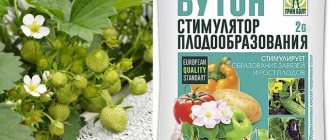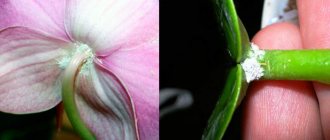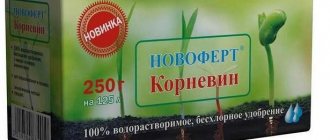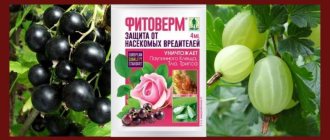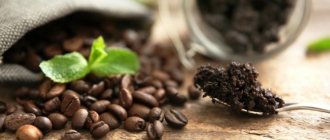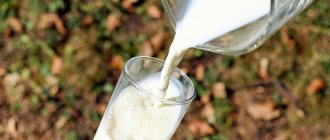Granules
The fertilizer, compressed into small granules, is very convenient to use - it does not require dilution or preparation. They are either scattered over the surface of the soil in a certain place, or buried to a shallow depth and watered. The release of nutrients occurs gradually, so granular fertilizers are classified as long-acting products.
The ratio of the main chemicals depends on the type of plant and their percentage is indicated on the packaging. Different packaging: 1; 2.5; 5; 10, 25 kg.
Fertika in granules:
| Name | Composition (NPK) in percent |
| Lawn (spring-summer) | 11-12-26 |
| Lawn (autumn) | 6-13-36 |
| Potato-5 | 11-9-16 |
| Autumn | 5-21-31 |
| Universal-2 | 12-8-14 |
| Coniferous | 8-5-14 |
| Floral | 17,7-9,4-11,2 |
Classification (parameters)
Products of the Fertika trademark are divided into groups depending on the parameters:
- by area of application - for the garden, vegetable garden and home, for agriculture;
- by season - spring, summer, autumn;
- by method of application - liquid, granules, water-soluble and others.
The compositions are divided according to their intended purpose:
- for indoor and balcony plants;
- for the garden;
- for garden;
- for coniferous crops;
- lawn
It’s easy to understand the classification and purchase the nutrition that is needed at a certain moment.
In addition to universal and special formulations, the manufacturer produces traditional tuks (Classic series), which includes:
- urea (urea);
- azophoska;
- superphosphate;
- nitroammophoska;
- ammonium nitrate;
- potassium nitrate;
- potassium sulfate and others.
Available in 1 kg bags.
Water soluble
Preparations in the form of coarse powder quickly dissolve in water, are used for root (watering at the root) and foliar feeding (spraying), can be combined with pesticides, and added to tank mixtures. A distinctive feature is a special chelated form of nutrients. Chelates are close in structure to the structure in which the substances are in their natural state, so they are absorbed by plants several times better than mineral fertilizers.
Water-soluble fertika garden and vegetable garden:
| Name | Composition (NPK) in percent |
| For evergreens | 8-7-21 |
| Crystallon floral | 18-5-23 + 3 Mg |
| Universal crystal | 18-16-21 + 3Mg |
| Kristalon tomato | 8-11-37 + 5Mg |
| Crystalon cucumber | 14-11-32,5 |
| Lux | 16-20-27 |
| Plus | 16-20-27 |
The best fertilizers for violets
The best fertilizers for violets
The best fertilizers for violets. My personal list.
The health of plants (including violets) directly depends on their nutrition and fertilizing.
Weakened, depleted plants are a tasty morsel for various pests and fungi.
Earlier, in one of the videos, I told you that sometimes I add a couple of spoons of superphosphate to the soil mixture for violets! Some inattentive listeners wrote strange comments that I “recommend superphosphate for powdery mildew, etc... Yes, no fertilizer will help cure a fungal disease or destroy mites! You just need to listen carefully and understand that the more care our violet receives in the form of fertilizers and fertilizing, the more strength it will have to resist various bad diseases and pests.
Having tried all kinds of fertilizers, and now there are very, very many different ones, I settled convenient and effective for me .
Next, I will give my List of fertilizers, I will show and tell you in more detail when filming a video story “My list of the best fertilizers for violets” for the Fialkomir YouTube channel.
Important points when using fertilizers:
-we use settled water.
-the first feeding no earlier than 1 month after transplanting the violets (if your violets grow in ordinary universal soil, then the first feeding is after 1.5-2 months).
- when using wick irrigation, we apply fertilizer at each watering (filling containers) in a lower concentration than indicated in the instructions for the fertilizer.
- You can’t feed overdried plants! If it's dried out, water it with clean water first.
List of fertilizers:
1. Fertilizer “Fertika LUX” - packaging 20 and 100 g. Composition of main elements 16:21:27 + microelements . My main fertilizer for adult violets.
2. Fertilizer “Fertika Kristalon flower” - composition 19:6:20 + Mg + microelements . It is a cheaper analogue of Lux. They were able to reduce the cost of this fertilizer by reducing the dosage of active ingredients such as potassium, phosphorus and iron. But Crystallon has added magnesium, which is not present at all in Lux. I use it when growing baby violets.
3. Microbiological fertilizers ( Azotovit, Phosphatovit, Kaliyvit ) - I use them simultaneously with Fertika.
4. Peters - a line of water-soluble universal fertilizers ( Peters Professional Plant Starter, Peters Professional Blossom Booster (Blossom Explosion), Peters Professional All Rounder (Universal).
Application Peters: Top watering 0.5-1 g. (1/3 tsp) per 1 liter. Water (5 grams per 10 liters of water)
Wick watering 0.5 g. (1/3 tsp) per 2 liters. water (2.5 g per 10 liters of water)
1 heaped teaspoon contains 10 grams.
Microbiological fertilizers are bacterial cultures that form compounds in the soil that are available for absorption by plants. The preparations contain a concentrated complex of microorganisms. Thanks to this, the soil microflora is treated, restored and improved. Strengthens plants and enhances their resistance to disease. Compatible with all types of fertilizers and growth stimulants, they can also be mixed with each other.
Azovite – enriches the soil with nitrogen and transforms it into a state available for plant nutrition. Produces an antibiotic that can resist fungal diseases of roots. Produces B vitamins.
Phosphatovit – enriches the soil with phosphorus and potassium, and these microelements easily enter the plants. Fights phosphates in the soil and protects young shoots from them. Has a beneficial effect on the development of a powerful root system.
Potassium - increases the “immunity” of plants; strengthens against diseases, heals soil and plants;
improves adaptation to temperature changes; reduces the likelihood of dehydration; has a positive effect on the flowering process. For watering adult violets, Phosphatovit is enough ; it also contains some bacteria from Kaliivit.
Method of application of fertilizers:
For convenience, I prepare in advance a concentrated solution of Fertik fertilizers (both types)
Packaging 20 gr. I dilute it in 1 liter of water (50 settled/50 boiled). Packaging 100 gr. I dilute it in 5 liters of water.
For root feeding I use 25 ml. concentrate per 1 liter of water. When using wick watering, I reduce the dosage - approximately 15-20 ml. (1-1.5 tbsp) per 1 liter of water.
To the diluted concentrate I add 3-4 caps per 10 liters in proportions: Azotovit (for children and transplanted plants (every month), Phosphatovit (for good flowering of adult violets) and Kaliyvit (every watering).
Children and adult violets, without signs of bud formation , can sometimes be fed with the same mixture by spraying on the leaf .
The fertilizer concentration is the same as for wick irrigation, it is already diluted.
In this case, I use Adhesive - 1 package per 10 liters.
I spray it at night and turn off the lamps. Exposing a wet violet leaf to direct sunlight is strictly contraindicated; the violet will immediately get burned.
That's my entire List of fertilizers for growing violets!
Author: Maria Solovyova (MS Fialkomir)
#violetworld #violets #Saintpaulia #violets_by-mail #flowers #violet #chimeraviolets #flowersoftheday #home_flowers #indoor_flowers #forhome #flowers #Saintpaulia #senpoliya #hobby #violets_in_Crimea #beautifulflowers #miniviolets #violetshellage #violetcollection #usambar violet #violafan #variety new_violets #homeplants #international_flowers #violetblooms #hobbyforthesoul #african_violets #loveflower #flowerstagram
Liquid
Fertilizers in liquid form are designed for feeding indoor flowers, some types of vegetables and berries. They are fast-acting, so they can be used more often than granular ones. Packaging – ampoules (10 and 30 ml), plastic bottles (250 and 500 ml).
Kinds:
| Name | Composition (NPK) in percent |
| Suite 1 (vegetables, seedlings) | 1,6-2,1-2,7 |
| Suite 1 (flowers) | 3,2-4,2-5,4 |
| Crystalon (citrus) | 3,4-2,9-4,7 |
| Crystalon (indoor flowers) | 3,2-4,2-5,4 |
| Crystalon (violets) | 3-3,2-5,6 |
| Crystalon (palm) | 3,5-3,2-4,2 |
| Crystalon (hydrangea, azaleas) | 5,5-4,5-11 |
| Crystal (orchids) | 1,7-1,9-2 |
| Crystalon (garden flowers) | 8,8-7,8-11 |
| Crystal (roses) | 8-7,8-11 |
What can be replaced
If this substance is not available for sale, you can purchase analog products. Gardeners use Flower Paradise fertilizers or complex fertilizers for rhododendrons and azaleas. Long-acting Omu Universal or Etisso for lawns show good results. You can also use Organic Mix.
Fertika Lux fertilizer has been appreciated by many gardeners and gardeners. The effect of using the mineral complex is noticeable after the first watering. Plants become stronger, flowers delight with rich, intense shades. The main thing is to follow the recommendations for using the product.
Organomineral
The composition of organomineral preparations includes humic acids and highly effective mineral additives. In addition to their nutritional function, they improve the structure of the soil, make it looser, retain moisture, and prevent the leaching of nutrients from the soil.
Kinds:
| Name | Composition (NPK) in percent |
| Fertika garden and vegetable garden | 10-5-8 |
| Fertika garden and vegetable garden universal (roses) | 8-6-10 |
| Fertika universal (strawberry, wild strawberry) | 3-11-14 + humate 18% |
| Fertika universal (onion, garlic) | 5-5-13 |
Features of production technology
Since their appearance on the Russian market, these fertilizers, made from Finnish raw materials, have stood out for their complex composition. In powders, granular mixtures and liquid fertilizers, the content of phosphorus, potassium and nitrogen is optimally balanced. In addition, each preparation contains an additional set of microelements. Highly specialized formulations take into account the needs of specific plants.
The company guarantees multi-stage quality control. First, the raw materials are tested, then the finished mixture, and finally the packaged product. In addition, the manufacturer highlights the following features and advantages of its fertilizers:
- the granules are treated with a substance that prevents them from caking;
- particles that do not meet the standard are eliminated;
- Organo-mineral fertilizers contain humic acids produced from leonardite. This rock is mined in the Far East;
- the preparations do not contain chlorine;
- water-soluble fertilizers turn into a homogeneous mixture without sediment;
- The chelated form of microelements ensures a high degree of their absorption by different crops.
Important. The manufacturer emphasizes: Fertik fertilizers are produced using technology that guarantees precise dosage of raw materials and uniform, homogeneous mixing of all components.
Reviews
Galina Yurievna, Perm
I like that you can choose Fertika for both vegetables and flowers. Personally, I have been using it for a long time for tomatoes, roses, violets, and I use the universal one to water the flowers in the flowerbed and various indoor plants. The main thing is that the instructions indicate how to prepare it and how often to use it. I don’t combine it with other fertilizers. It seems to me that the composition is balanced and Fertika is enough.
Pavla, s. Olkhovka
For seedlings of vegetables and flowers I use Fertika Lux 1 and the same for feeding flowers, but only with a different composition (especially for flowers). The seedlings, if everything is taken into account, grow strong and take root well after picking. I only water it once every 10 days, and not every 7, as recommended. My soil is fertile, so I don’t overdo it. Garden flowers like spraying. The foliage becomes somehow saturated, they bloom for a long time. I spray either early in the morning or late in the evening.
Instructions for use "Fertika Lux"
The fertilizer was developed and produced in Finland. Then the drug began to be produced in Russia. The substance complies with European quality standards. The mineral complex can be used at any time of the year, with the exception of winter. There are no such restrictions for indoor plants.
Expert opinion
Zarechny Maxim Valerievich
Agronomist with 12 years of experience. Our best country expert.
Ask a Question
Water the ground with diluted powder or spray flowers, shrubs or other crops with the solution. To eliminate the risk of chemical burns to plants, it is necessary to comply with the consumption rates of the drug.
Typically, the spring use of additives is aimed at strengthening the immunity of crops, and the summer use activates the processes of fruit set and flowering. In autumn, fertilizer is recommended to be used for cultivating the soil in preparation for the winter period. Support for indoor plants does not depend on the time of year. The main condition is that after applying the product, the flower pot is not left in the sun, but is transferred for a short time to a shaded place.
Other types of fertilizers
In the extensive range of Fertika you can find a preparation for almost any plant, be it garden or home, ornamental or producing an edible crop. To help gardeners who grow lemons, oranges or grapefruits in greenhouses, the manufacturer has developed the Crystalon complex for citrus fruits. Liquid fertilizer can be poured at the root or used to spray foliage. In the spring-summer period, trees are fed 2-3 times a month, in winter - no more than once every 3 weeks.
There is also “its own” fertilizer for indoor and outdoor conifers. It is called Kristalon for conifers. Increases the resistance of crops to unfavorable conditions, improves their decorative properties. Available in monodose form.
There are several fertilizers available for lawn grass. Some can be placed in the ground when sowing. For example, Lawn fertilizer (spring-summer). Others feed growing ornamental grass - Yaramila Lawn. This line also includes preparations for preparing the lawn for winter. They have a minimum of nitrogen, but a lot of potassium and phosphorus.


